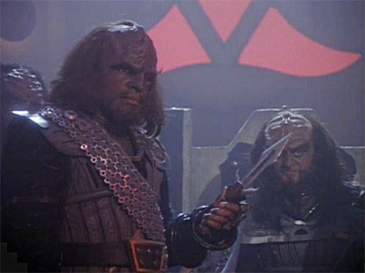Hey, that new
Shōgun show on FX/Hulu is pretty awesome, right? And although it’s historical fiction, it’s loosely based on some real historical characters. But instead of talking about the show, we’ll just talk about some of those real shōguns. The top 10 of them, specifically.
Oh, and what IS a shogun, exactly? In case you're familiar with the term but don't know exactly what it means. Basically for most of the era when they ruled (a nearly 700 year period from 1185-ish to 1868), they were the true power behind the throne. Sure, there was an Emperor – but think of that Emperor as more of like a figurehead like how Charles is in England, and the shōgun as the legit power, especially militarily. But unlike something like a UK Prime Minister, shoguns themselves were largely ALSO hereditary titles too, with children comding after their fathers. So it was like a sort of second emperor. Of course, this “they are the real ruler” thing isn’t true in some of the Kamakura period, where the shoguns ALSO became figureheads, but let’s not go down that little diversion. It’s complicated.
10. Tokugawa Tsunayoshi (徳川 綱吉)
The fifth Tokugawa Shogun, he reigned from 1680 to 1709. Get used to that "Tokugawa" name from now on, because the top 10 is going to be full of Tokugawas (spoiler!). Coming from such a distinguished line of powerful rulers, he had his work cut out for him in making a legacy for himself. And what was that legacy? Well… things started rough and he had trouble becoming shogun in the first place, with a mini-succession crisis in 1680-81 before he was finally installed. He was also a tightwad administrator who wasn’t insanely popular for doing things like strictly enforcing the samurai code by enforcing subordinates to commit suicide for things like “mismanagement.” He also banned an insanely popular pastime throughout history in nearly all cultures: prostitution. Booo! What a buzzkill! But what he’s most famous for is that he had a policy called the “the Edict on Compassion for Living Things” which was essentially a law that banned killing dogs. Yeah, you can't hate on him for being a bit of an animal rights activist. I mean, that sounds cool and everything, but it gave him the nickname "the Dog Shogun" – which wasn't exactly a complement. He was born the year of the dog so he made it his thing. Only his ban on dog killings sort of made the cities overrun with diseased stray dogs, which folks didn’t exactly come to love. Strife and disagreement between the daimyōs (just think "nobles") was common during his reign too – and that whole “revenge of the forty-seven rōnin” thing happened during his time as shogun. He wasn’t successful as getting an heir either, which wasn’t helped by his “official” wife poisoning the children he had with concubines. While some legends say he was stabbed to death by the consort – his eventual demise was likely the less dramatic “get got measles.” Anyway. That's why he's down here at #10. He's got a legacy for sure, but it ain't exactlty shining.
9. Tokugawa Ietsuna (徳川 家綱)
Slightly more successful than Doggo Shogun was his older brother, Ietsuna. The fourth Tokugawa Shogun, he ruled from 1651 to 1680. He continued the policies of centralization initiated by his predecessors and was able to maintain a solid period of stability within the Shogunate. He was also largely considered to be an able leader. So… an able leader in a stable period. Sounds pretty successful, right? Why's he down here at 9? Well, he also sort of deferred the vast majority of his power to a number of regents that his father had appointed when he took control at a young age. And after he grew up and was old enough to rule on his own? He sort of… well… just didn’t. He let those people keep control. He was cool letting other people run stuff for him. So, you know, a successful time period in history – but Ietsuna himself wasn’t exactly the person who could take a lot of responsibility for it. He was there at a lucky and stable time, and was just in it for the ride.
8. Ashikaga Yoshimasa (足利 義政)
This guy was the eighth shōgun of the Ashikaga shogunate, reigning from 1449 to 1473 during the Muromachi period. He was the son of the sixth Ashikaga shōgun and really only assumed the title because his 10-year-old brother (the seventh Ashikaga shogun) fell off a horse and died. That tended to happen a lot in this era (think of Henry II of France over in Europe) Needless to say that ALSO in this era, there were obviously all sorts of family rivalries and feuds so this type of situation with premature dying rulers was a good breeding ground for civil wars. Yoshimasa’s reign was plagued by the Ōnin War - a civil war that lasted from 1467 to 1477. You’ll see that the end year of that war extends beyond his reign. Was he killed in a battle? Nope! Nothing quite so dramatic. He turned in his papers and just left. Doesn’t seem like a war-plagued reign warrants making the list of top 10 – but then again Yoshimasa’s reign is generally regarded as marking the height of the Ashikaga Shogunate's cultural achievements. Although, also a turning point beginning its decline. So there’s that. Still, the Ashikaga shogunate stumbled on about exactly 100 more years after his reign - with none of the Ashikagas who came after him being powerful enough to make this top 10 list.
7. Tokugawa Yoshimune (徳川 吉宗)
Speaking of eighths, Yoshimune was the eighth shōgun of the Tokugawa shogunate, ruling for 30 years from 1716 until his abdication in 1745. He’s known for repealing the ban on Western literature (previously initiated in 1640), a number of financial and cultural reforms (especially the Kyōhō Reforms for the 1720s), but if you’re looking for “cool samurai shit” related to him – he spent a lot of time trying to resurrect Japanese swordsmithing culture. Today we think of Japanese people having cool swords as “yeah, duh, obviously, they always have” but it was actually a lost art for a long time. It was this guy's reign as shogun that brought sexy swords back, so all you Japan-fetishish dorks out there with katanas hanging on your wall have him to thank for that. Come 1745 he too said “nah, I’m done” and retired, going on to live another 6 years.
6. Ashikaga Yoshimitsu (足利 義満)
Jumping back to the Ashikaga shogunate and travelling back in time to when it was a rising rather than fading power, Yoshimitsu was its third shogun, and reigned from 1368 to 1394. Being a third son it was never assumed that he’d rule, but then again life was pretty fragile back then so he had the good luck to continue living long enough to reign – unlike his two older brothers. And by “live long enough to reign” I am referring to the ripe old age of 10 when he took the title. The Ashikaga shogunate is often called the “Muromachi shogunate” too, because the palace that this guy built. Accomplishments? He helped to resolve rifts between the feuding Northern and Southern royal courts in Japan, suppressed the power of some of the regional daimyōs that might have tried to challenge his central authority, played a major role in the genesis of Noh theatre, but probably most famously engaged in all sorts of diplomacy with China, making him one of the most successful diplomat shoguns in Japanese history. Like the others already mentioned, this guy retired after his rule and even tried to take on a title usually reserved for retired emperors (until he abruptly died during that process, oh well).
5. Tokugawa Iemitsu (徳川 家光)
The third Tokugawa Shogun, and father of the unfortunately named Dog Shogun and his brother Ietsuna, he served as ruler of Japan from 1623 to 1651. He’s primarily known for further centralizing the power of the Shogunate, and implemented strict isolationist policies. You know how we just talked about Tokugawa Yoshimune repealing the 1640 ban on western literature back at #7? Yep, well you’ll see that 1640 just happens to fall right here in the reign of Iemitsu. Of course book-banning wasn’t his only isolationist policy. He took on some more, erm, "extreme" actions like crucifying Christians (so those failing upwards white guys on Shōgun have that to look forward to), expelling all Europeans from Japan, and closing the borders of the country (a policy that largely continued for the next 200 years). So, that’s definitely a man who left a lasting legacy. He ordered one of his brothers to kill himself too. Yikes. Oh, and if you remember my old rankings of European Monarchy mistresses (parts 1 and 2) and some of their surprising power – you might also be interested in the fact that Iemitsu’s wet nurse acted as his political adviser and was at the forefront of his negotiations with the Imperial Court. So another fun fact for you there, if you didn’t want to end on the crucifying Christians and ordering his brother to kill himself stuff because that’s a downer. Ha! But you just ended on it anyway by me bringing it back up.
4. Tokugawa Hidetada (徳川 秀忠)
As I implied earlier, the Tokugawa Shogunate was pretty powerful and all over the top 10. Here we have Iemitsu’s father, the second Tokugawa Shogun, who reigned from 1605 to 1623. Hidetada’s own father was the powerful and influential Ieyasu (we’ll get to his time as shogun later), but Ieyasu was another one of those “I’m going to retire before I die” type of rulers – which was actually a sound strategy to allow a hereditary shogun to take over with a little more legitimacy while their still powerful and influential predecessor is alive and supporting them. That was, of course, the good side of his father still being alive. The bad side was ALSO the fact that Ieyasu was “still powerful and influential,” which can be seen as also harming some of Hidetada’s early reign as he was basically in his father’s shadow, despite nominally being shogun. The two would clash occasionally for the first 11-ish years of Hidetada’s reign until Ieyasu’s death in 1616. And in that timeframe was the Siege of Osaka - a series of battles undertaken by the Japanese Tokugawa shogunate against the Toyotomi clan, and ending in the Toyotomi’s clan destruction. That was of course an important achievement, and showed that he could consolidate his father's rule and play a key role in the stabilization of the Tokugawa regime. He also greatly improved the shogunate’s relationship with the Imperial Court, marrying a daughter to the Emperor – a union which would result in his granddaughter becoming Empress one day. Beyond that, his rule also saw the successful development of the city of Edo. He himself would resign in 1623, turning things over to Iemitsu (and his wet nurse).
3. Ashikaga Takauji (足利 尊氏)
We’ve already talked about two Ashikagas before – so let’s now talk about the founder of the Ashikaga Shogunate, who reigned from 1338 to 1358. Yep, that’s going back a bit. As you might assume from someone who is credited as the “founder” of a new Shogunate… the inverse relationship is of course that a previous Shogunate must have ended. We haven’t talked a ton about the Kamakura Shogunate yet, although the long story short on that is that it was the original shogunate dynasty that had successfully ruled for 140ish years. Takauji was a fairly successful general for the Kamakuras, but they fell in 1333 in an event called the “Kenmu Restoration.” That was a 3-year period in history where the Emperors themselves once again had a large amount of power in Japan rather than the shoguns, and it would be the last time the Emperors would really have power until all the way until the Meiji restoration in the 500 years later in the 19th centuruy. Long story short – the samurai clans didn’t exactly love it and many of the samurai sided with Takauji to march on Kyoto. The decisive Battle of Minatogawa in 1336 basically put Takauji in power, though it wouldn’t be another two years until he got the shogun title. While obviously being a key military victor and dynasty founder, his reign itself didn’t shine as bright as how he got to it – with it being plagued by a period of feuding rival “emperors” in the North and South. A feud that wouldn't be resolved until the reign of Yoshimitsu (#6 above).
2. Minamoto no Yoritomo (源 頼朝)
The first Shogun in Japanese history (arguably – there are some pre-Kamakura rulers that some make arguments about deserving the title, but… again… complicated), he established the aforementioned Kamakura Shogunate and laid the groundwork for future military rule over Japan's Emperors. His reign occurred between 1192 and 1199 – basically when like Richard the Lionheart was on the throne in England (if you need that time period comparison). This guy is the George Washington of Shoguns. The shOGun. Get it? The OG is in caps. Give me a break here, guys. I'm trying. Anyway, so at the time there was this "Genpei War" between two major clans – the Taira and Minamoto. The end result after years of fighting was victory by Minamoto no Yoritomo in 1192, after which he established the Kamakura "Bakufu" ("tent government," a term that's basically the same as shogunate) and became the de facto military ruler of Japan, giving himself significant power and influence over the country's affairs. And that's how he establishes a position that was more powerful than the emperor itself. Though he’d only rule with that title for a few years before his death – the fact that he established the shogun title itself means he kickstarted the Japanese feudal period that would last all the way until 1868.
1. Tokugawa Ieyasu (徳川 家康)
Well, we have talked a lot about the Tokugawas, so it should not be a surprise to you that the individual coming in ranked as the #1 shogun in Japanese history is the founder of the Tokugawa Shogunate, Ieyasu, who unified Japan and established a long-lasting and powerful dynasty. Remember how I began by talking about the FX show (and the novel it was based on) – being inspired by real historical events. Well, the shōgun that Shōgun is based on is Mr. #1: Tokugawa Ieyasu. Will it surprise you that the man ranked #1 only ruled with that title for two short years though – from 1603 to 1605? If you’re watching the show which depicts a somewhat reluctant figure who isn’t necessarily looking to regain that mighty title for himself, that fact shouldn’t really be that surprising. He’s regarded as one of the three "Great Unifiers" in Japanese history, the son of a minor daimyo who would build a castle in Edo (a city that would eventually have another name… made you’ve heard of it: Tokyo), and who eventually rise through the ranks and win the Battle of Sekigahara in 1600 – paving the way for the reestablishment of the Shogun system which had been obsolete since the implosion of the Ashikaga shogunate some 30 years prior. Oh, I guess that's anotehr spoiler for the show technically. The main character depicted as the noble hero wins. Shocker, right? Anyway... despite stepping own in 1605 – as mentioned in the discussion of his son Hidetada’s reign – Ieyasu would retain significant influence and power in his retirement.





















